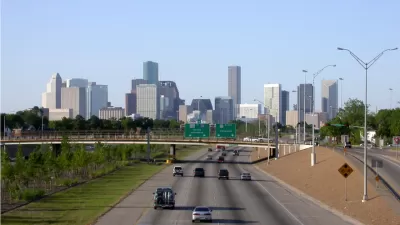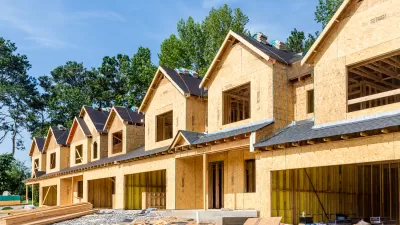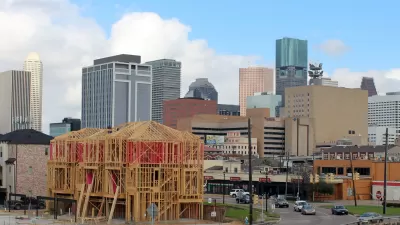A researcher at Rice University finds that proclamations of Houston’s affordability, gentrification, and growth are just myths.

Ryan Holeywell of The Urban Edge looks at a new report produced by Lester King, a Rice researcher and urban planner, where King challenges four common “myths” about the Houston’s gentrification, population growth, affordability, and development in the Inner Loop. Among the findings is that the city's reputation for housing affordability fails to take into account that pay for workers is often lower and transportation costs higher than other large cities around the US.
“When transportation costs are added to housing costs as a percentage of income, many areas along the periphery of the city also become less affordable,” King writes. That means housing is cheaper in Houston, but not necessarily more affordable…
Houston ranks 26th for affordability, according to data King cites from the Center for Neighborhood Technology. The average Houstonian spends 46 percent of his income on housing and transportation costs. “This conflicts with Houston’s marketability as the affordable capital of the country,” King writes in his report.
Lester also finds that the anticipated growth of the city – 3.5 million new residents by 2035 – assumes that all of those people will move inside the city limits, but current trends show that the new residents will be absorbed across the Houston-Galveston metro region (a much larger area). The assumption that Houston will be absorbing all of those people, King’s reports states, “may be indirectly eroding its affordability and middle class wealth base, since land values are increasing to meet the needs of 3.5 million people, who are in fact not moving here at all.”
FULL STORY: Here Are Four Myths About Houston’s Growth

Pennsylvania Mall Conversion Bill Passes House
If passed, the bill would promote the adaptive reuse of defunct commercial buildings.

Planning for Accessibility: Proximity is More Important than Mobility
Accessibility-based planning minimizes the distance that people must travel to reach desired services and activities. Measured this way, increased density can provide more total benefits than increased speeds.

Fair Housing Cannot Take a Back Seat to ‘Build, Baby, Build’
If we overlook fair housing principles in the plan to build US housing back better, we risk ending up right back where we started.

LA Metro Board Approves New 710 Freeway Plan
The newest plan for the 710 corridor claims it will not displace any residents.

Austin’s Proposed EV Charging Rules Regulate Station Locations, Size
City planners say the new rules would ensure an efficient distribution of charging infrastructure across the city and prevent an overconcentration in residential areas.

Making California State Parks More Climate-Resilient
A recently released report offers recommendations for keeping state parks healthy and robust, including acquiring additional land for conservation and recreation.
City of Costa Mesa
Licking County
Barrett Planning Group LLC
HUD's Office of Policy Development and Research
Mpact Transit + Community
HUD's Office of Policy Development and Research
Tufts University, Department of Urban and Environmental Policy & Planning
City of Universal City TX
ULI Northwest Arkansas
Urban Design for Planners 1: Software Tools
This six-course series explores essential urban design concepts using open source software and equips planners with the tools they need to participate fully in the urban design process.
Planning for Universal Design
Learn the tools for implementing Universal Design in planning regulations.


























